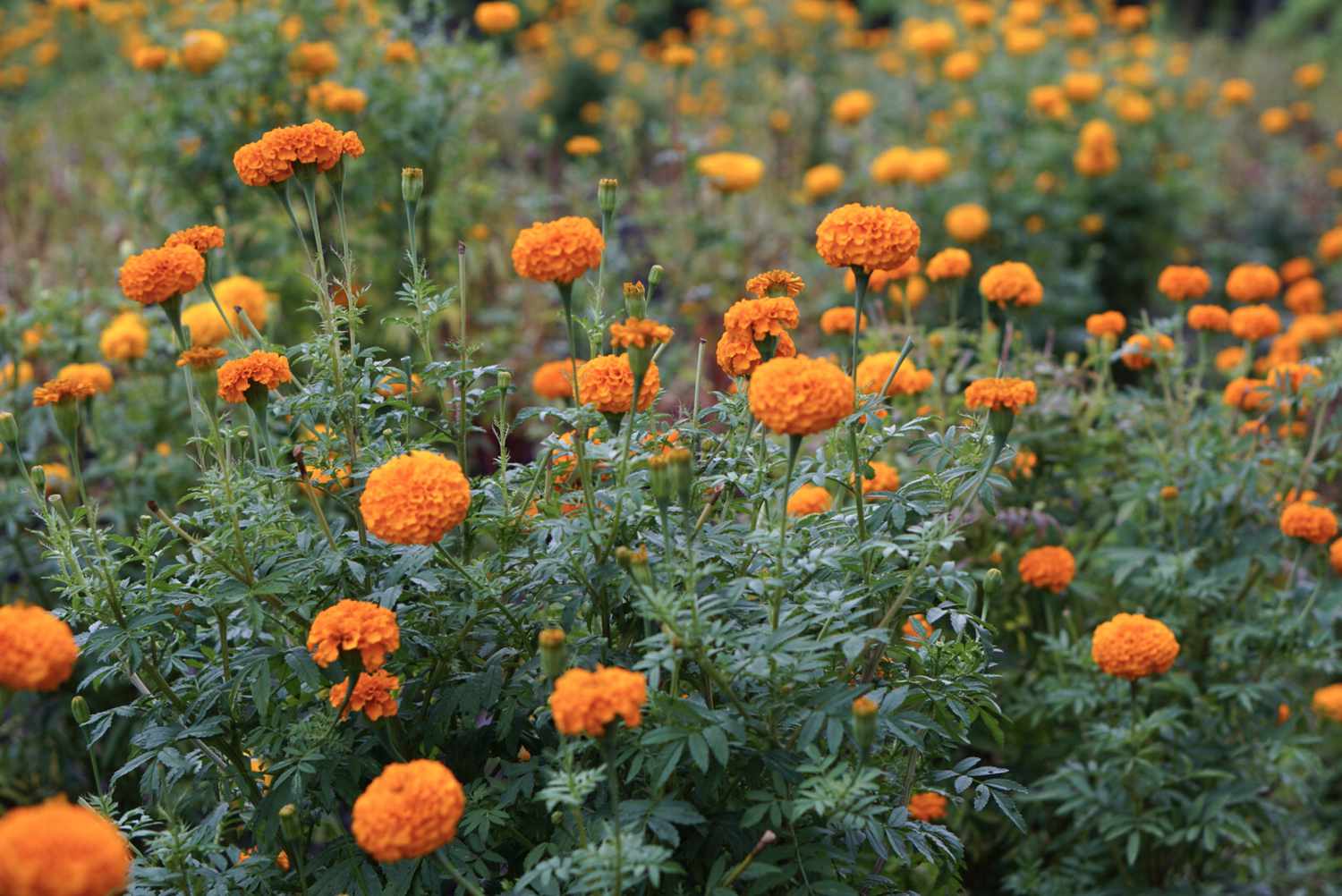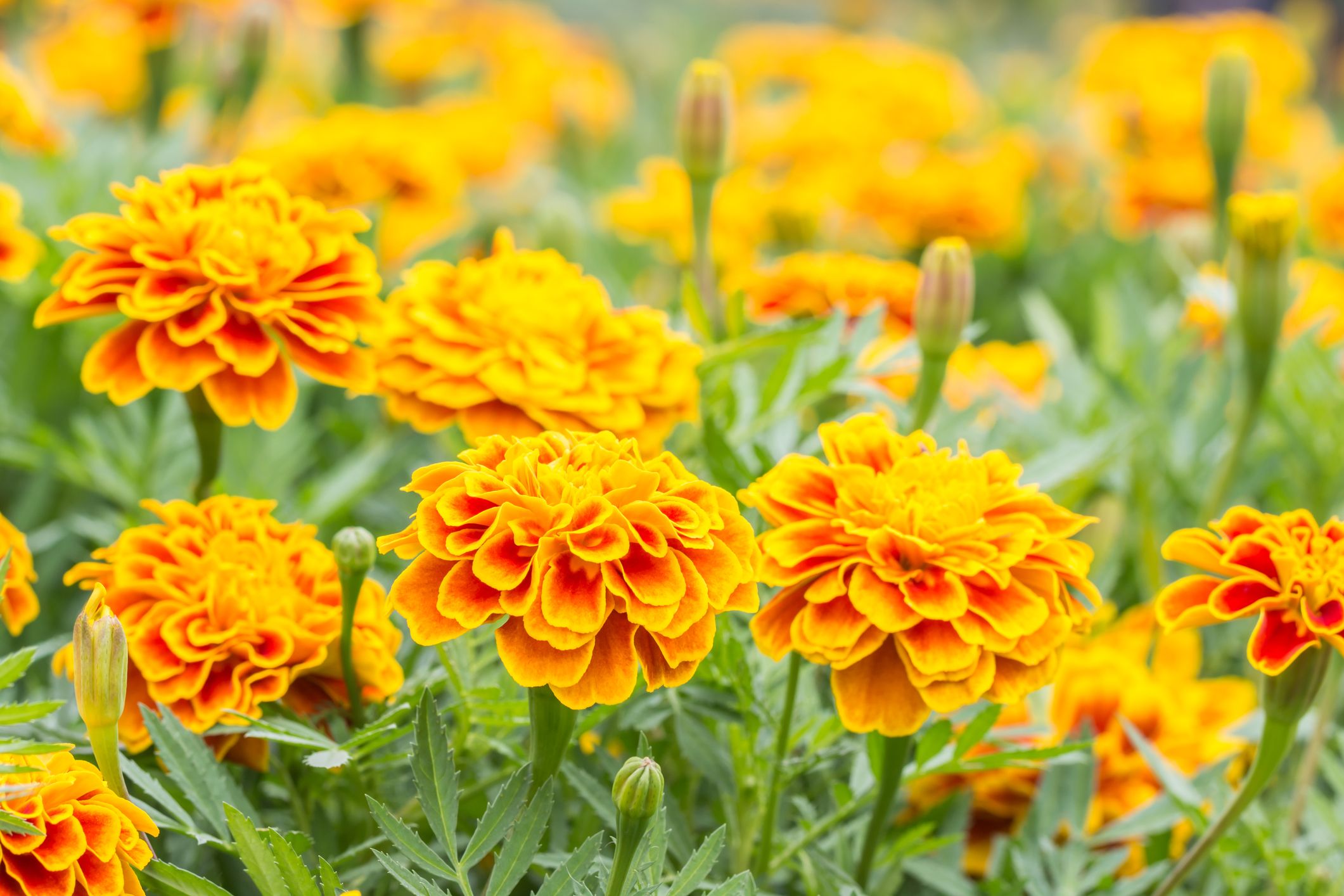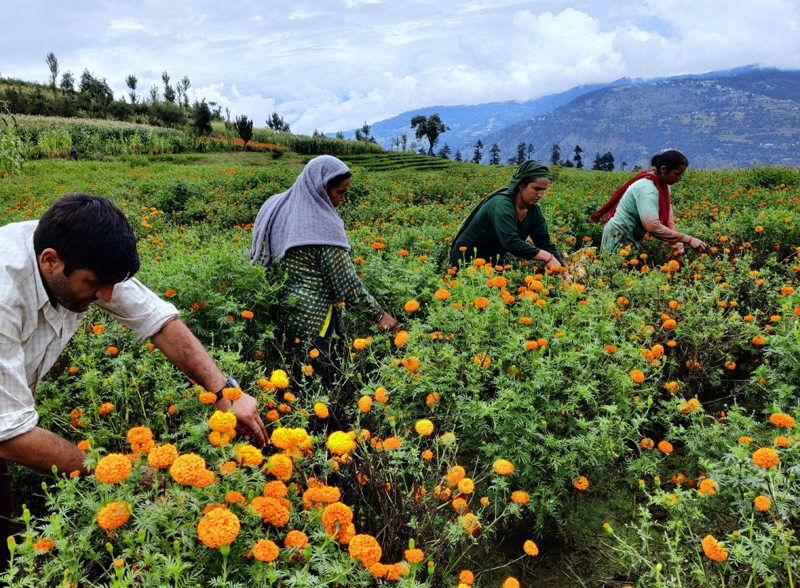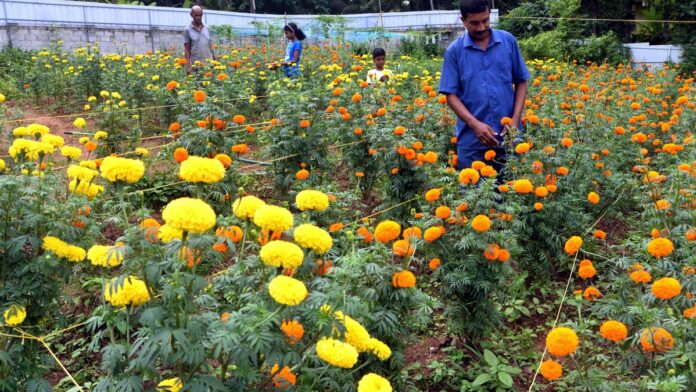Marigold farming is gaining widespread popularity among farmers and horticulturists due to its low investment requirements, short cycle of cultivation, & consistent demand in the market. Known for their very vibrant colors as well as pleasant fragrance, marigolds hold immense cultural, religious, & ornamental value. These particular flowers are being widely used in decorations, religious rituals, & festivals, making them the most profitable option for commercial farming.
Climate & Soil Requirements
Marigold plants thrive in fairly warm & sunny climates, making them the most ideal for tropical & subtropical regions. The optimal temperature for their growth specifically ranges between 18–30°C. These plants require well-drained, fertile soil with a pH between 6.0–7.5. While marigolds can optimally grow in various soil types, loamy soil rich in organic matter is ideal for achieving maximum yields. Adequate sunlight is very essential for healthy growth & abundant flowering, as shaded areas may considerably reduce flower production and lead to poor plant health.
Popular Varieties of Marigold
There are primarily two commercially important varieties of marigold:
-
African Marigold (Tagetes erecta) – Known for its large blooms and tall plants, this particular variety is extensively cultivated for commercial purposes as well as landscaping.

2. French Marigold (Tagetes patula) – These plants are compact and bushy, with smaller flowers in vibrant shades. They are commonly used for borders, flower beds, & potted plants.

Every variety has its unique market demand &d cultivation requirements, giving farmers the desired flexibility based on local market preferences.
Planting and Cultivation Practices
Marigold plants are typically propagated through seeds. The particular seeds are first sown in nurseries or seedbeds, where they germinate in about 5–7 days. After about 25–30 days, the seedlings are being transplanted into the main field. Proper spacing is very crucial for optimal growth, with a recommended spacing of 30 cm x 30 cm for African varieties and 20 cm x 20 cm for French varieties.
Marigold plants require regular watering, particularly during their vegetative & flowering stages. Overwatering, however, can lead to root rot, so proper drainage must always be ensured. Additionally, balanced fertilization using Nitrogen (N), Phosphorus (P), and Potassium (K) fertilizers promotes better flowering & healthy plant growth.

Pest and Disease Management
Like all crops, marigolds are very susceptible to pests and diseases that can impact yield & quality.
-
Common Pests – Aphids, spider mites, and leaf miners.
-
Common Diseases – Powdery mildew, damping-off, & root rot.
Certain preventive measures like as crop rotation, the use of bio-pesticides, & regular field inspections can help manage these issues quite effectively. Farmers should avoid excessive use of chemical pesticides in order to maintain flower quality.
Harvesting and Yield
Marigold flowers are usually ready for harvesting within 2–3 months of planting. Flowers are best harvested in the early morning or late evening to preserve their freshness. For maximum shelf life, flowers should be handled carefully and stored in a cool, shaded place. Under optimal growing conditions, a well-maintained marigold farm can yield approximately 8–10 tons of flowers per hectare.
Market Demand and Opportunities
The market demand for marigold flowers peaks during festivals, weddings, & other cultural events. They are widely used for garlands, decorations, & religious ceremonies. Farmers can sell their produce in:
-
Local Flower Markets
-
Wholesale Flower Dealers
-
Event Management Companies
-
Direct Retail Sales
Additionally, marigold flowers have a growing demand in the essential oils and dye industries, providing additional revenue streams.
Conclusion
Marigold farming is a very profitable venture with considerably high returns & relatively low risks. Its adaptability to different climates, short cultivation cycle, & consistent demand make it an ideal choice for farmers looking to diversify their agricultural activities. With proper planning, pest management, & market analysis, marigold farming can serve as a sustainable income source for farmers while adding vibrant colors to both fields and markets.



